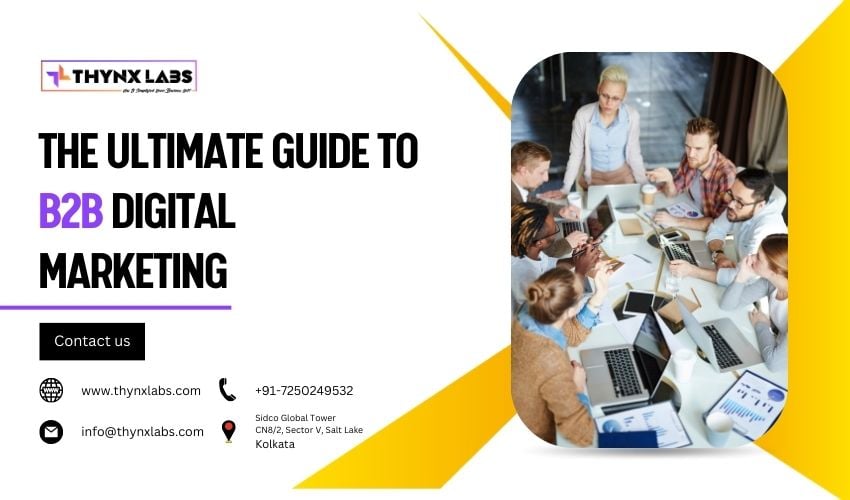How to Generate Leads with Digital Marketing - A complete Guide
Generating leads with digital marketing involves several strategies that can help you attract potential customers and convert them into leads. Here are some ways to generate leads with digital marketing:

- Search Engine Optimization (SEO): Optimize your website and content to appear at the top of search engine results pages (SERPs) for relevant keywords. This will increase your visibility and drive traffic to your website.
- Pay-Per-Click (PPC) Advertising: Use platforms like Google Ads and social media advertising to target potential customers with relevant ads that will drive traffic to your website and generate leads.
- Content Marketing: Develop high-quality content, such as blog posts, e-books, and videos, that are relevant to your target audience. This will help you establish your brand as an authority in your industry and attract potential customers who are interested in your products or services.
- Social Media Marketing: Build a strong social media presence on platforms where your target audience is active. Use social media to engage with potential customers and share valuable content that will drive traffic to your website.
- Email Marketing: Build a list of subscribers who are interested in your products or services, and use email marketing to send them targeted messages that will help them move through the sales funnel.
- Webinars and Events: Host webinars or events that provide value to your target audience and collect leads from attendees.
- Landing Pages: Create landing pages that are optimized for lead generation, with clear calls-to-action (CTAs) that encourage visitors to take the next step.
By implementing these strategies, you can attract potential customers to your website and convert them into leads that you can nurture and eventually convert into customers.
Run Social Campaigns
Running social campaigns is a great way to generate leads with digital marketing. Here are some steps to help you run a successful social campaign:
- Set Goals: Determine what you want to achieve with your social campaign. This can be to increase brand awareness, generate leads, or boost sales. Make sure your goals are specific, measurable, attainable, relevant, and time-bound (SMART).
- Define your Target Audience: Identity who you want to reach with your social campaign. This can be done by developing buyer personas based on your ideal customer.
- Choose the Right Social Media Platform: Select the social media platforms that your target audience is most active on. This will allow you to reach the right people with your social campaign.
- Create Engaging Content: Develop content that will capture the attention of your target audience. This can be done through images, videos, and infographics.
- Use Paid Advertising: Utilize social media advertising to amplify your social campaign. This will allow you to reach a larger audience and generate leads.
- Track and Analyze Results: Monitor your social campaign's performance and track metrics such as engagement, clicks, and conversions. Use this data to optimize your campaign and improve your results.
By following these steps, you can run a successful social campaign that generates leads and achieves your marketing goals.
Leverage Content Marketing
Leveraging content marketing is an effective way to generate leads with digital marketing. Here are some steps to help you leverage content marketing for lead generation:
- Define Your Target Audience: Identity who you want to reach with your content marketing efforts. This will help you develop content that resonates with your target audience.
- Develop High-Quality Content: Create valuable and relevant content that addresses the pain points and needs of your target audience. This can be in the form of blog posts, e-books, whitepapers, infographics, videos, and podcasts.
- Optimize Your Content: Make sure your content is optimized for search engines, including relevant keywords and meta descriptions. This will improve your content's visibility and attract more potential customers.
- Distribute Your Content: Share your content on your website, social media, email, and other digital channels. This will increase your content's reach and attract more leads.
- Gate Your Content: Gate your high-value content, such as e-books and whitepapers, behind a lead capture form. This will allow you to capture lead information and follow up with them.
- Nurture Your Leads: Use email marketing to nurture your leads with targeted and personalized content. This will keep your brand top of mind and move leads further down the sales funnel.
- Analyze Your Results: Track and analyze your content marketing efforts to identify what is working and what needs improvement. Use this data to optimize your strategy and generate more leads.
Use Email Marketing
Email marketing is a powerful way to reach a large audience and promote your business or product. Here are some tips on how to effectively use email marketing:
- Build a targeted email list: Start by building a targeted email list of people who have shown interest in your product or service. You can collect email addresses from your website, social media, events, and other channels.
- Choose an email marketing platform: There are many email marketing platforms available, such as Mailchimp, Constant Contact, and Campaign Monitor. Choose the one that best fits your needs and budget.
- Create an engaging email: Your email should have a clear subject line, a compelling message, and a strong call to action. Make sure to use a responsive design so that your email looks great on any device.
- Personalize your emails: Personalization can make a big difference in the effectiveness of your email marketing. Use the recipient's name and other relevant information to create a more personalized experience.
- Test and optimize your campaigns: Test different subject lines, content, and calls to action to see what works best for your audience. Use analytics to track your results and make adjustments as needed.
- Follow best practices: Make sure your emails comply with email marketing best practices, such as including an unsubscribe link and honoring opt-out requests.
- Stay consistent: Consistency is key when it comes to email marketing. Create a regular schedule for sending emails, and make sure to stick to it.
By following these tips, you can create effective email marketing campaigns that help you reach your target audience and achieve your business goals.


